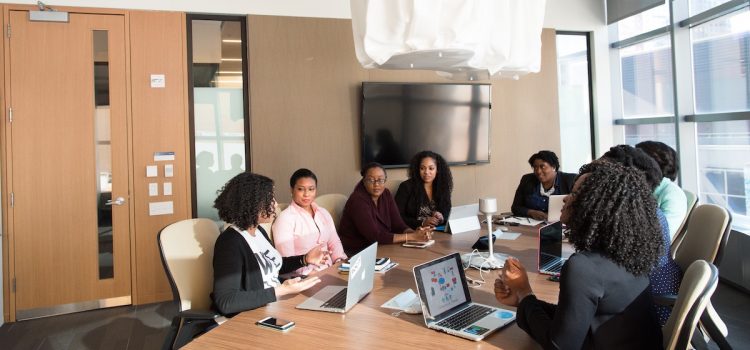

This article is an excerpt from the Shortform book guide to "Time to Think" by Nancy Kline. Shortform has the world's best summaries and analyses of books you should be reading.
Like this article? Sign up for a free trial here.
Do you think better when you’re relaxed or under pressure? Does competition encourage or stifle effective thinking?
In Time to Think, Nancy Kline asserts that high-quality thought requires dedicated time. It also requires the right environment. She identifies three characteristics of a setting that impact how conducive the space is to good thinking.
Keep reading to learn Nancy Kline’s thinking environment recommendations.
#1: Diversity and Equality
According to Nancy Kline, thinking environments should be diverse because diversity is reflective of reality. The world doesn’t consist of just one type of person, so your thinking space should be filled with different kinds of people. Additionally, everyone should be on equal footing, with no one considered superior to anyone else—even if some people are higher up in the organization’s hierarchy. While people may have different responsibilities, everyone can be a brilliant thinker, and everyone should be given an equal opportunity to employ their brilliance.
| How Diversity and Equality Impact Organizations Some people object to the idea of deliberately creating diverse groups and organizations, suggesting that such groups don’t perform as well as groups built solely with achievement in mind. However, research shows that teams perform better and engage in higher levels of thinking when they consist of participants with a variety of backgrounds and perspectives. To foster a greater sense of equality in meetings, experts recommend engaging all members of the group as much as possible with hands-on, collaborative activities, changing the person who leads the meeting on a rotating basis so everyone gets a chance, and soliciting and implementing feedback from all members about how to improve future meetings. |
#2: Relaxed Atmosphere
According to Kline, thinking spaces should have a relaxed, unhurried atmosphere that communicates to thinkers that they can take their time to do their best thinking. Many business executives believe that conveying urgency gets better results from their employees or group members, and some groups even fabricate a sense of urgency deliberately to get these results. But, this only leads to greater stress and less effective thinking.
(Shortform note: Some experts suggest that a lack of urgency in the workplace results in complacency and reduced productivity, and that urgency helps with long-term planning and problem solving, as well as improving an organization’s reputation. However, others argue that a perpetual sense of urgency reduces innovation and makes employees fearful, while also undermining employee trust in managers. This suggests that in workplace-based thinking sessions, while everyone should be given plenty of time to think and share, it may be best to impose a time limit of some kind on the session.)
#3: Cooperation, Not Competition
Finally, your thinking environment needs to be one that encourages cooperation over competition. Kline explains that our society tends to exalt competition as the key to progress. However, in reality, competition doesn’t guarantee that anything we do or create will actually be good: It only means our creation will be better than something else. Competition obstructs thinking because it drives us not to do well, but just to do better than others. And, by limiting our thinking to what others are already thinking, Kline says, we close ourselves off to a wide range of possibilities.
(Shortform note: Research suggests that competition can sometimes be beneficial to creativity and innovation and that whether it’s harmful or helpful depends on how it affects employees emotionally. As with urgency, fear-based competition is harmful and can increase the likelihood of unethical behavior, while competition that’s driven by a feeling of excitement enhances people’s work. For thinking sessions, encourage group members to think about the positive outcomes of what they’re working toward, and refrain from punishing thinking you don’t feel is “good enough.”)
Exercise: Make Your Space a Thinking Environment
For the purposes of partnered or group thinking, use Kline’s tips to create a space that’s conducive to good thinking.
- First, consider the perspectives that are going to be represented in your session. Do you have a diverse range of viewpoints to draw from? What can you do to bring in ideas from other perspectives?
- Make sure everyone in your thinking space is on equal footing. What are some potential differences in power or status between you and your thinking partner, or between members of your thinking group, that could interfere with a sense of equality? How can you keep these differences from impacting everyone’s thinking?
- Now consider the physical space in which you’ll be doing your thinking. Does the space convey a relaxed atmosphere? What can you add (such as a mini zen garden or a small fountain) or remove (such as a ticking clock) to make the space feel more relaxed?
- Finally, how can you make sure your thinkers are coming prepared to cooperate rather than compete? How can you place emphasis on positive outcomes to get your thinkers excited about the process?

———End of Preview———
Like what you just read? Read the rest of the world's best book summary and analysis of Nancy Kline's "Time to Think" at Shortform.
Here's what you'll find in our full Time to Think summary:
- That what and how we think determines everything we do
- Why the quality of your thinking depends on how well you listen to others
- A step-by-step process for taking on the role of the listener






